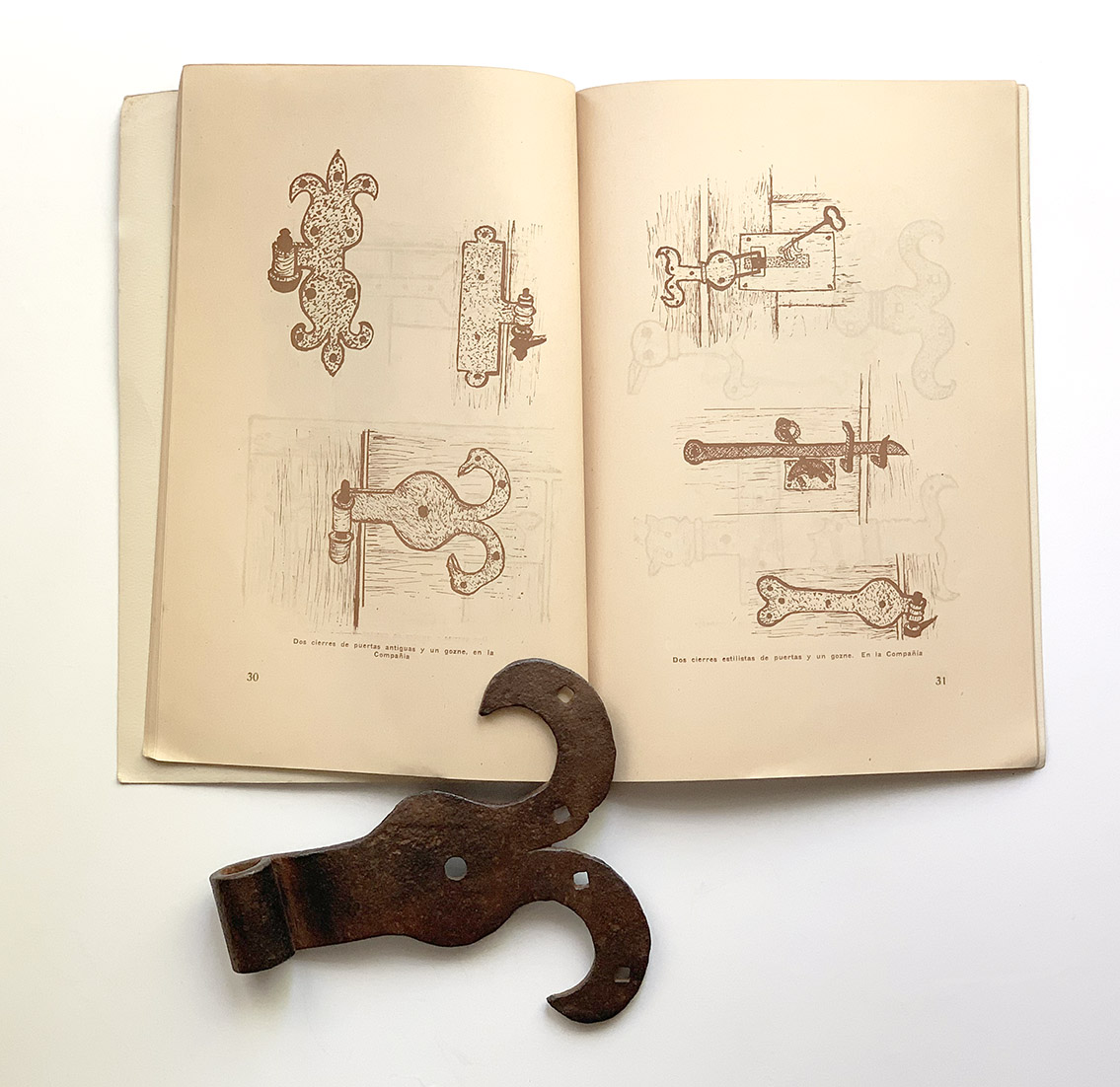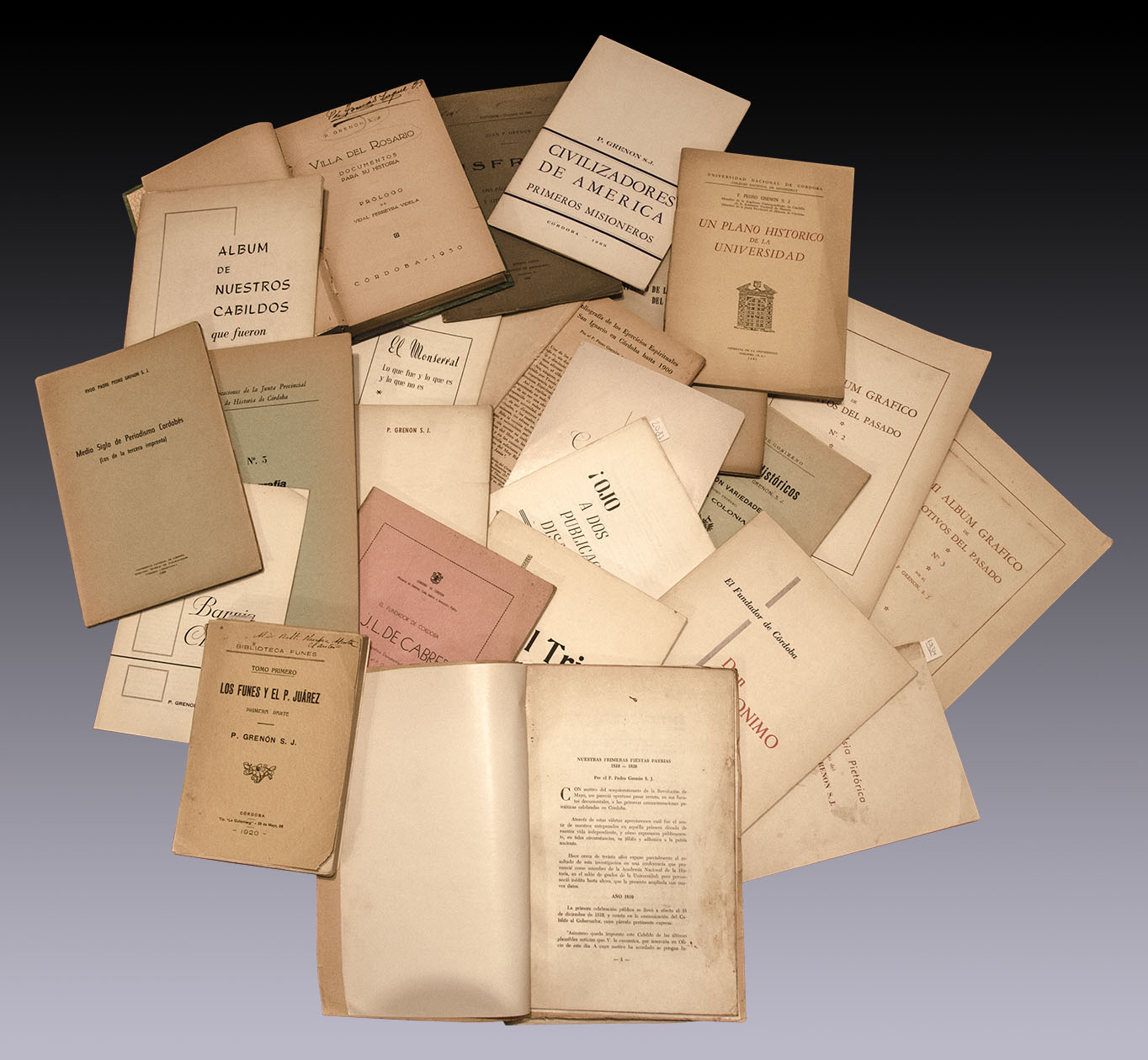The writing of the past is the product of practices that, from the present, tell us glimpses of our yesterday. From that point on, there have been many who have participated in the construction of these stories. Within the cast in which the historians themselves are found, we find lawyers, priests, journalists and writers. That is why the article we present today covers the work of a priest-historian from Córdoba, Father Pedro Grenón.
Pedro Juan was born on July 26, 1878 in Colonia Esperanza, province of Santa Fe, Argentina, a place characterized by being a colony of Swiss immigrants. He entered the Jesuit novitiate in 1898 and moved to Córdoba in 1914. While in this city he was entrusted with writing the history of the Society of Jesus in 1916 and, from there, his interest in writing and graphic representation was awakened. From the past. He served as parish priest in different neighborhood churches such as those in Barrio Zumarán and La France, in addition to the Compañía de Jesús, a church located in the historic center of the city of Córdoba.
From early on Grenón participated in spaces that wanted to build history as a scientific discipline through the creation of magazines, archives and institutions. Just to mention some of his participations, he was appointed member of the Córdoba branch created by Ricardo Levene of the Board of American History and Numismatics in 1928, he founded the Córdoba section of the National Academy of History in 1940 and participated in the creation of two central spaces: the Provincial Archive of Córdoba in 1941 and the Argentine Ecclesiastical History Board in 1942. As a historian he had a great concern for heritage, which led him to be an advisor to the National Commission of Museums, Monuments and Historical Places in Córdoba and participate in the naming of the Jesuit Estancias as national historical monuments.
His work has been little studied over the years. There are the works of Alejandro Moyano Aliaga “Bibliography of P. Grenón SJ: (1916-1963)” and some recent reconstructions such as that of Federico Bordese in the Magazine of the Photographic Archive of Córdoba. In addition, there are some works by Jacqueline Vasallo and Mónica Ghirardi that recover the documents and the perspective of this priest on the place of women in the past.
His work is very wide and varied so, for the purposes of a first approach, we will only make a few mentions. Moyano Aliaga calculated until 1963 (that is, eleven years before his death) that he had produced approximately two hundred and eighty-nine works. Not all of them are historical writings, but some focused on the compilation and dissemination of documents and museological studies. Likewise, the memory of Grenón is based on the compilation of photographs and the preparation of illustrations and engravings on architectural building pieces.
It is interesting how all of his production prioritizes the colonial theme and time period, like many other historians with ties to the Church. Of course, within this category there is a deep study of Jesuit history and its rescue in its present through the revaluation of the heritage of this congregation. In this succinct description, we cannot forget his constant effort to participate and construct local stories of the province of Córdoba. An example is his unpublished monographic work on the History of Laguna Larga, submitted to a competition in 1952 and which was very recently found by Prof. Marcelo Guardatti.
Some works
One of his most recognized works is Historical Documents. It consists of twenty-four volumes of sources from the Historical Archive of the Province of Córdoba and some studies on the History of the Company of Jesus. It is estimated that Grenón was recovering these testimonial pieces throughout his life, compiling them in volumes of a great thematic variety: from the “episodic” ones about the martyrs, the colonial games, and correspondence between men and women; even those dedicated to the history of literature and music.
One of the central characteristics of these compilations is the focus on the cultural and daily issues of the colony and that they were usually accompanied by interventions and interpretations made by the compiling priest. They were organized into five sections: literature, indigenous, episodic, patriotic and varieties. In turn, they were subdivided into volumes of two or three per section, “some already published at the time of organization and others still in press.” This work was financed by the government for its dissemination in different parts of the country and, according to the newspaper La Nación, it served as the Colonial Encyclopedia of Córdoba.
Other notable works were “Half a Century of Cordoba Journalism” (1964-1965) and the first known approach that recovers the historians of Córdoba in “Contribution to the Historiography of our cities, towns and villages in Córdoba” (1968). Over the years he continued to publish different documents in addition to his works and participated in various tributes. Finally, around 1973 he donated his literary and historical production to the Municipality of Córdoba and died in 1974. From it, collections were created in the Provincial Archive of Córdoba and, according to Bordese, the Photographic Archive of Córdoba emerged, still existing.
Grenón, his memories in the present
Going through his history and the recognition he enjoys today allows us to find him in discussions about his memories on social networks. There it is discussed who he was and what memories he evokes in different citizens of Córdoba who may have had exchanges with him; or they were believers who accompanied his work as a parish priest; or that they simply remembered him as part of the Córdoba landscape: “an iconic character” of the city center. He is also remembered in web pages that reconstruct his architectural work, the tour of Cordoban chapels and temples or that try to recover his heritage and documentary and Jesuit recovery work.
We Córdoban historians still owe ourselves a comprehensive study of his career, a historiographical duty given the traces that we have left of his work and that today nourish our libraries and archives.
* Adaptation of the article “Father Pedro Grenón, the saint of the “shabby cassock”. Approach to his historiographical work.” Naveg@mérica. Electronic magazine edited by the Spanish Association of Americanists, (29), special for Hilario.

